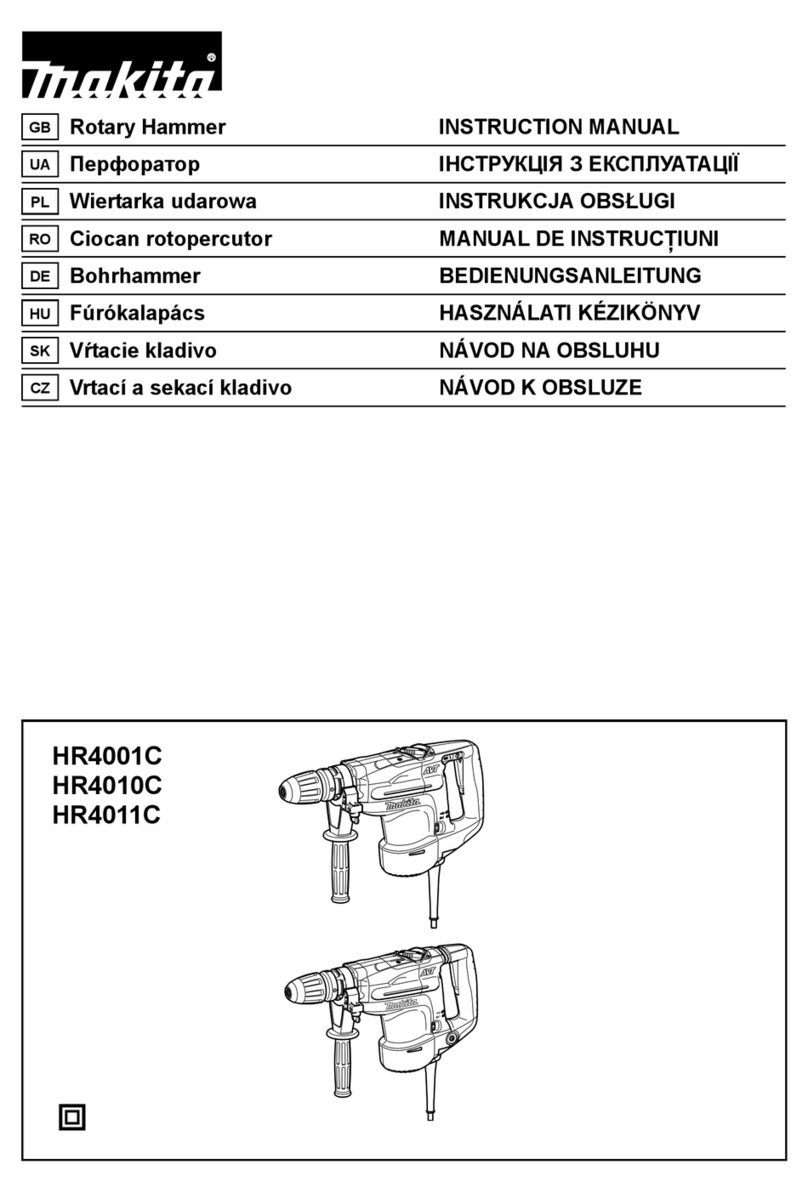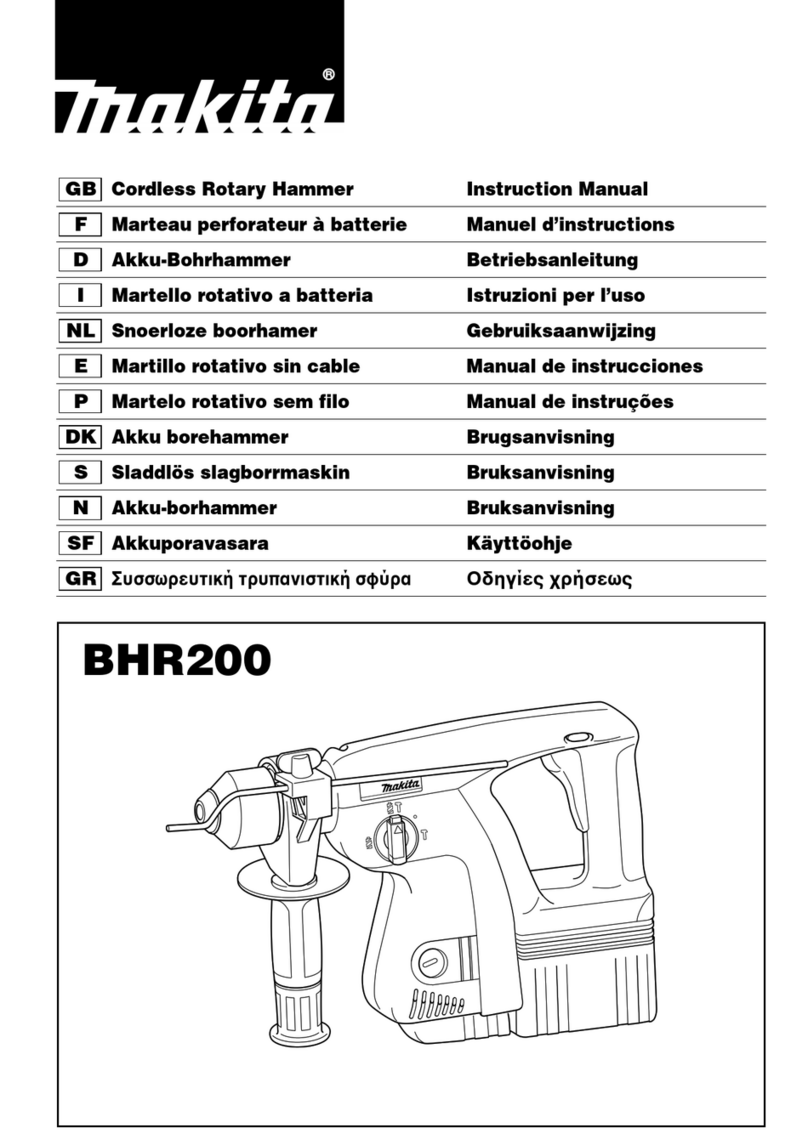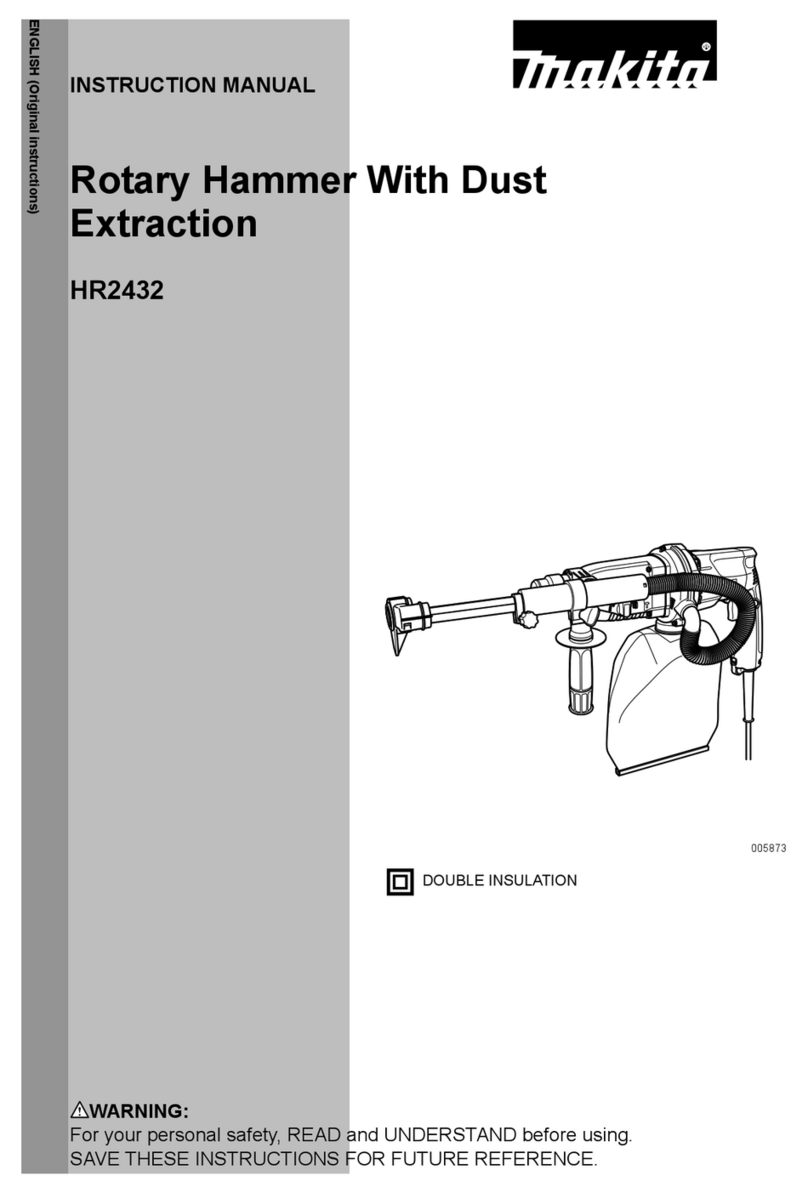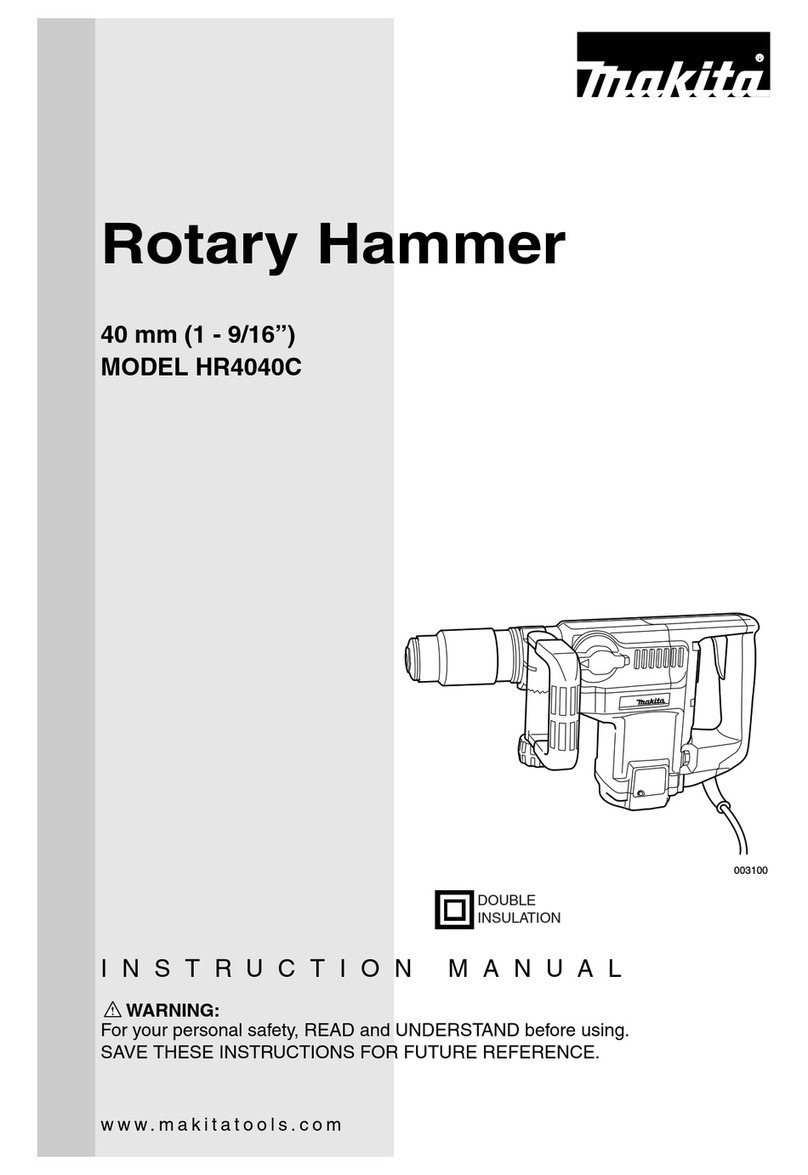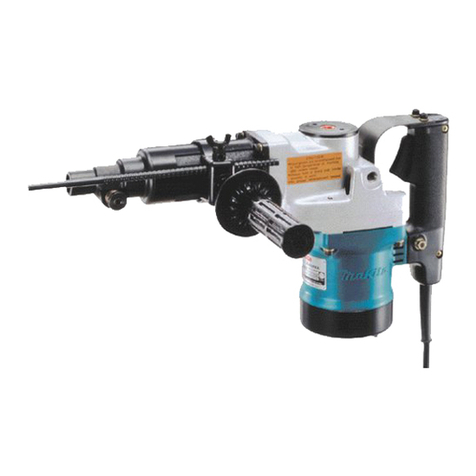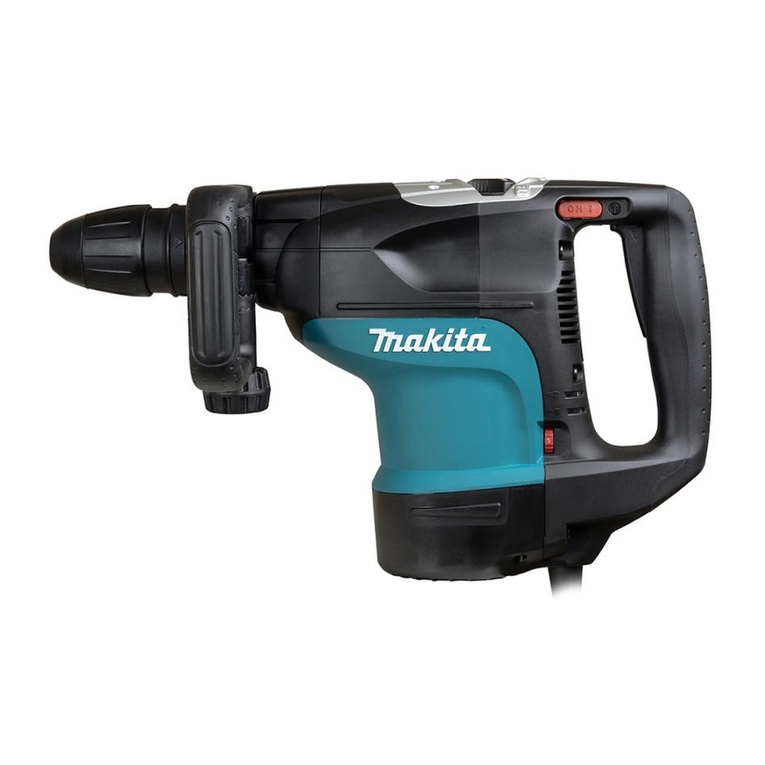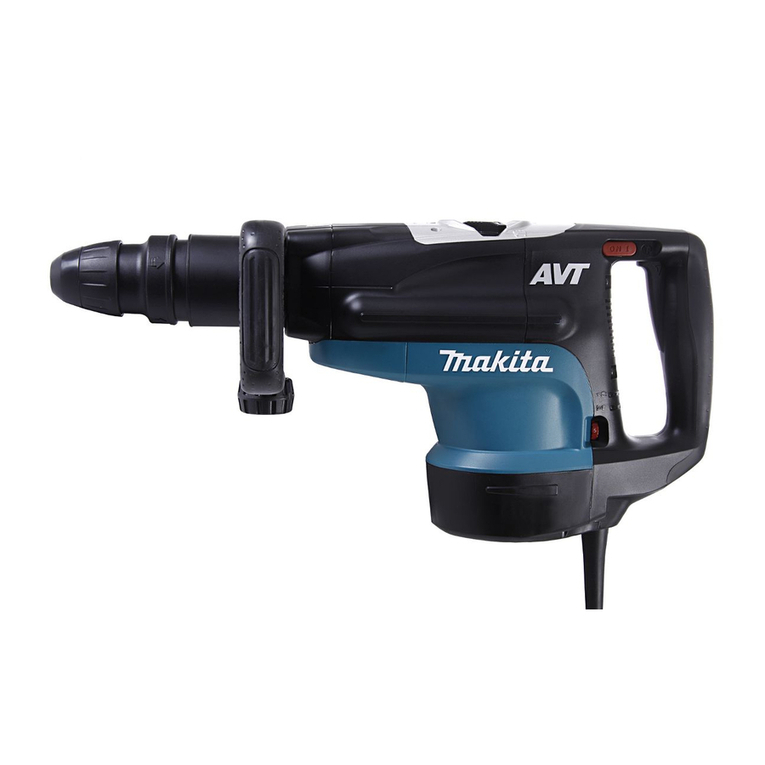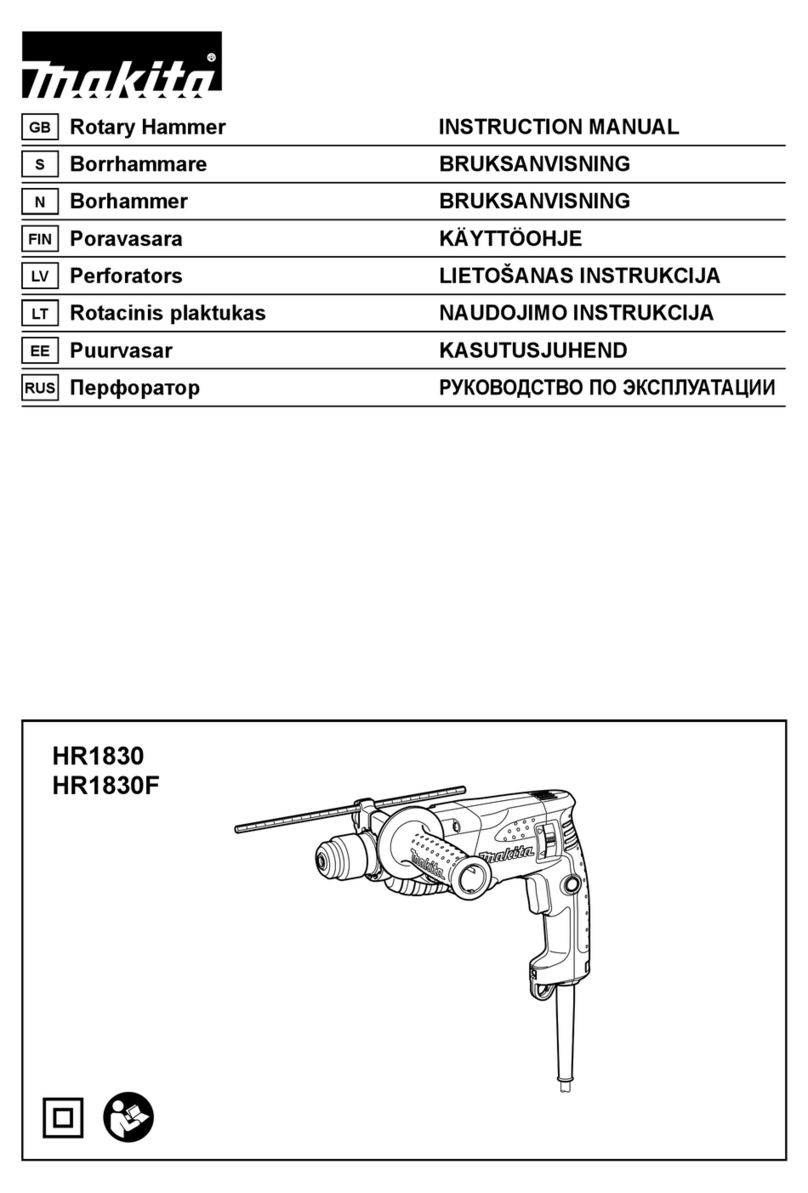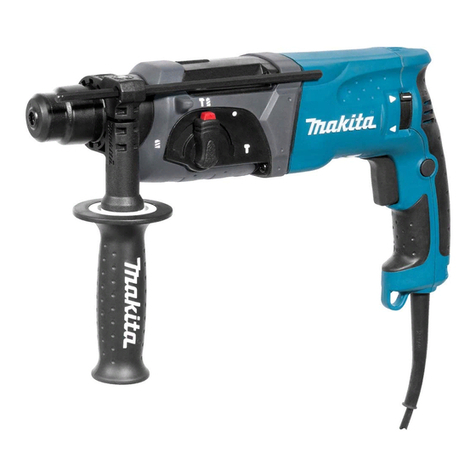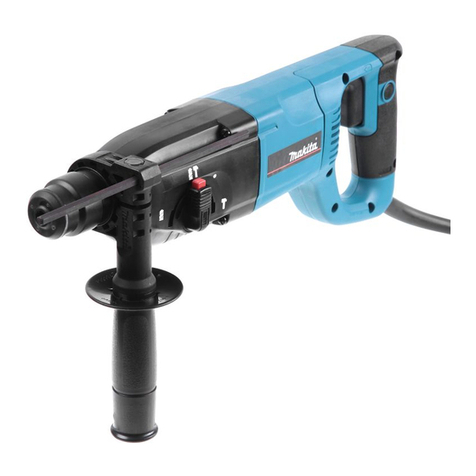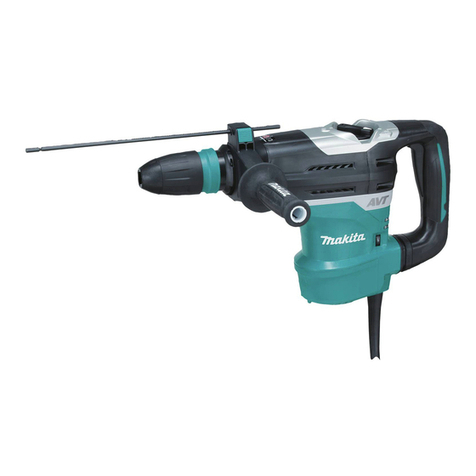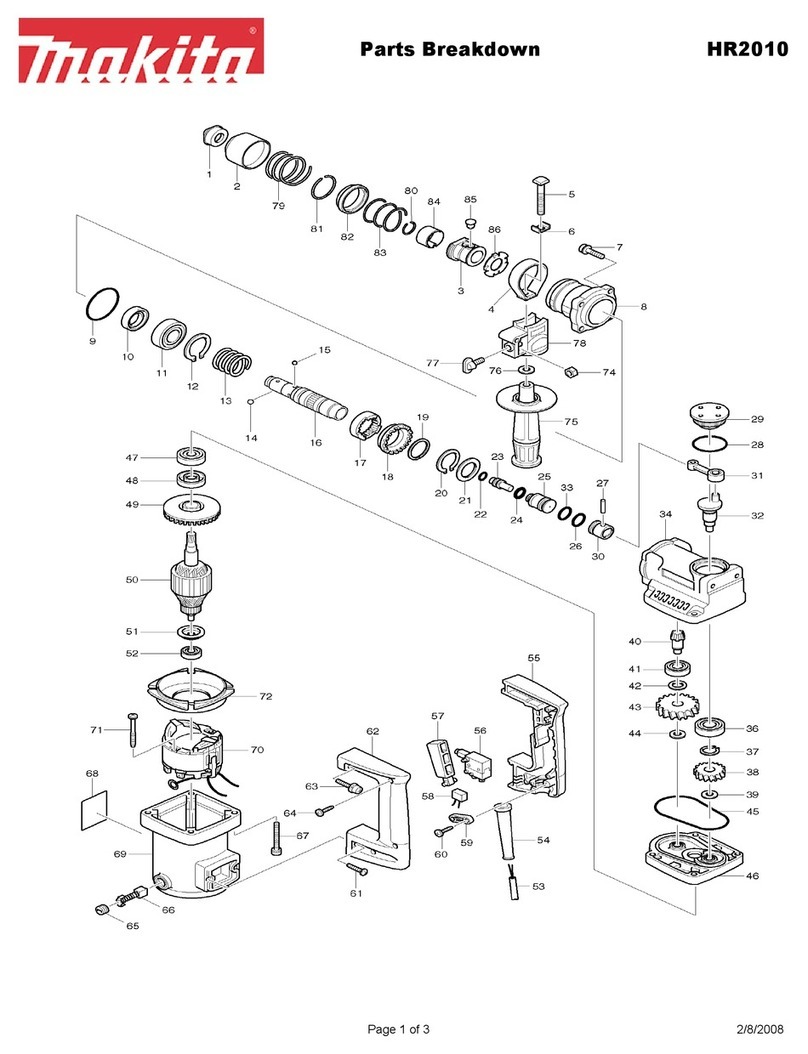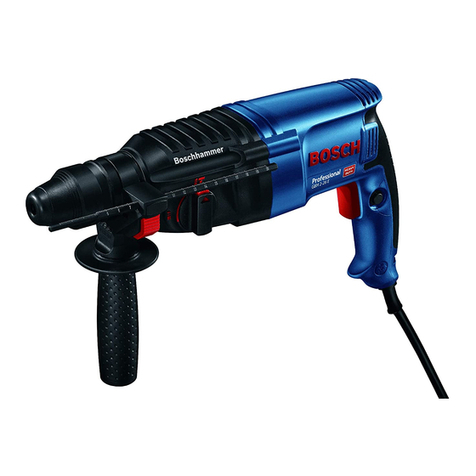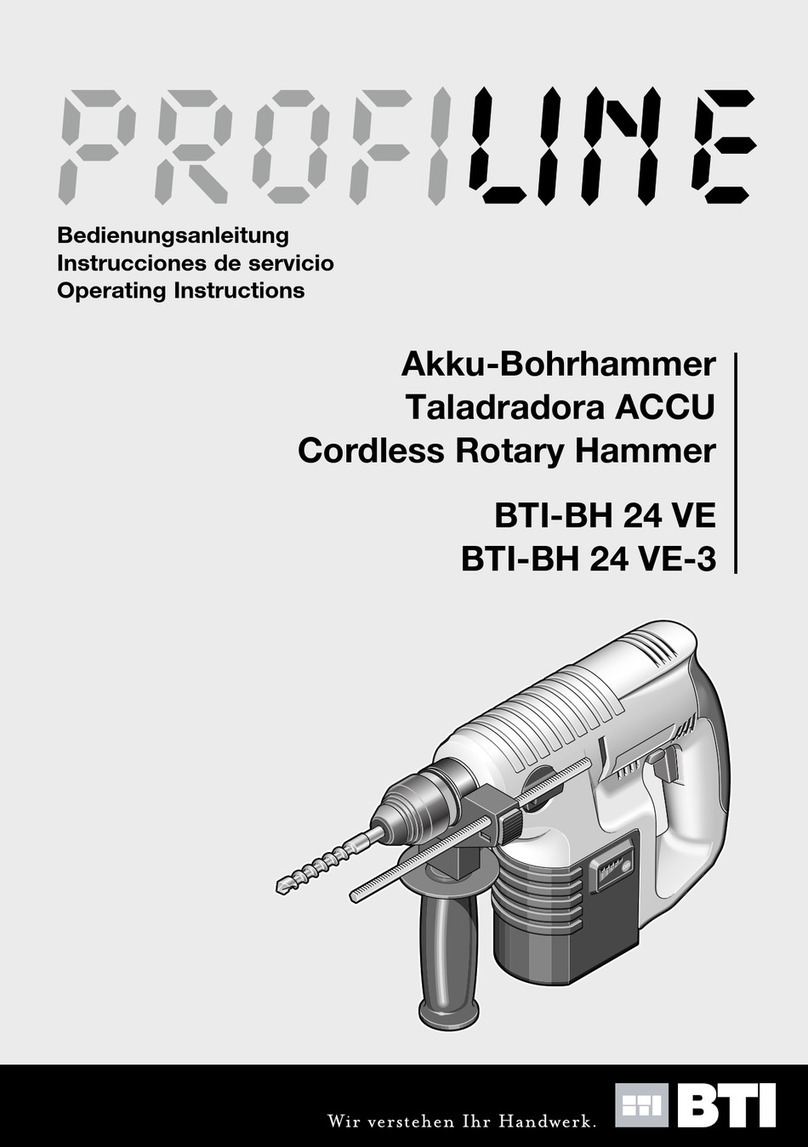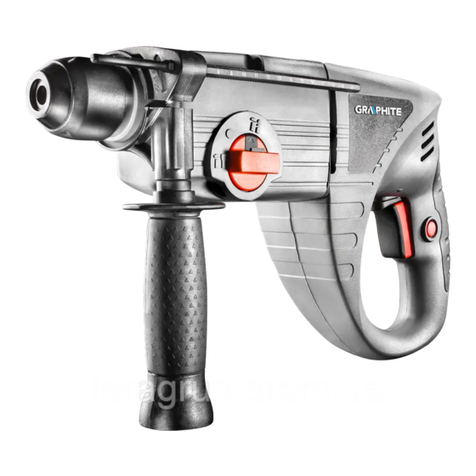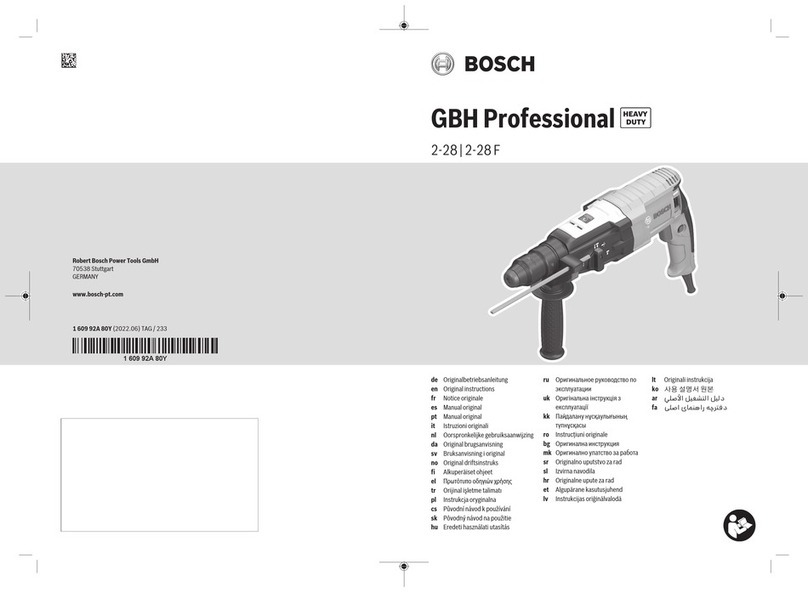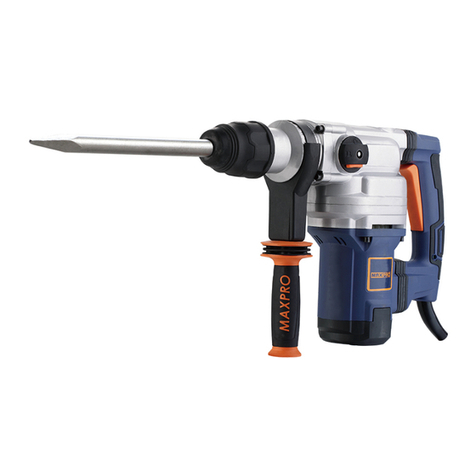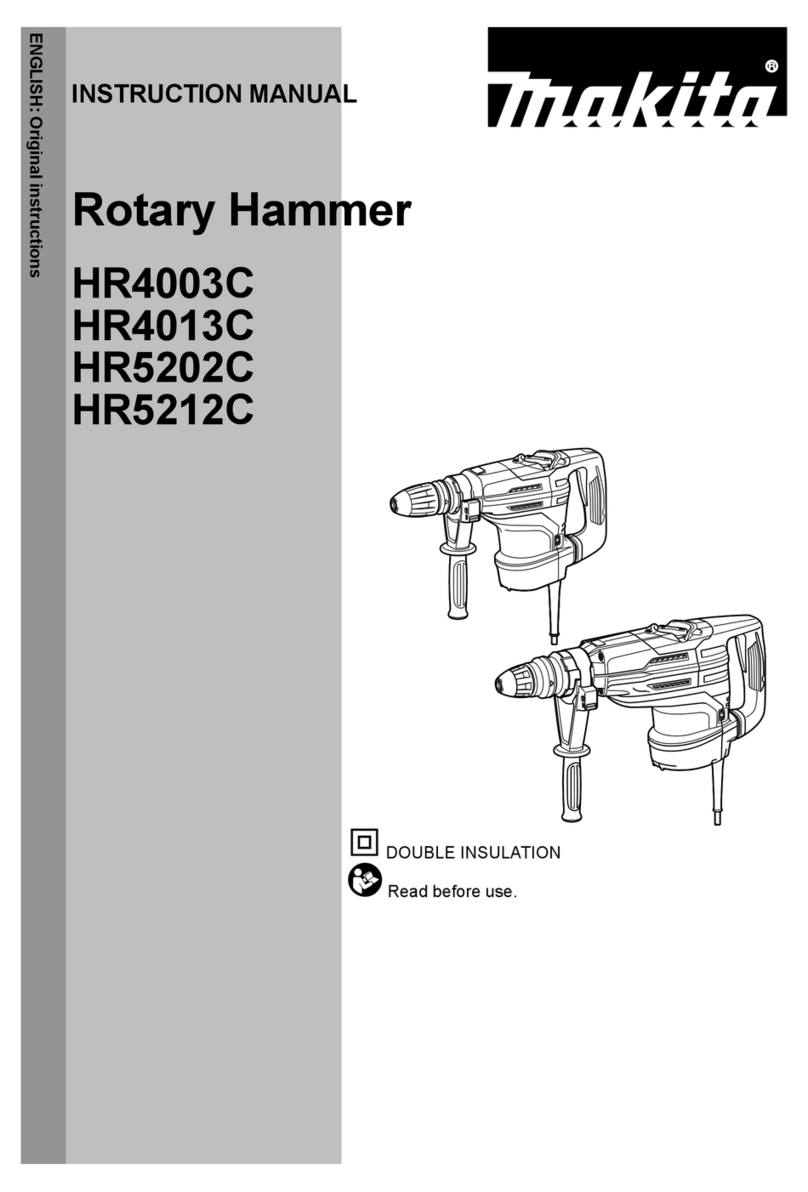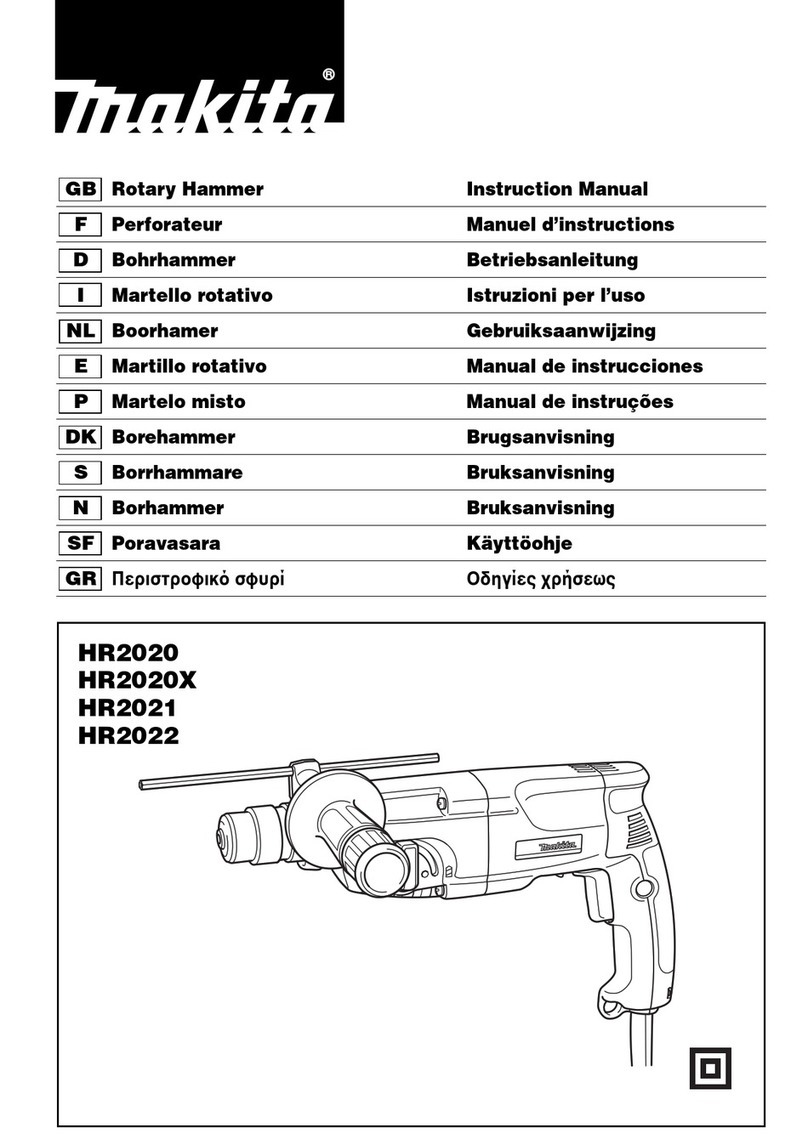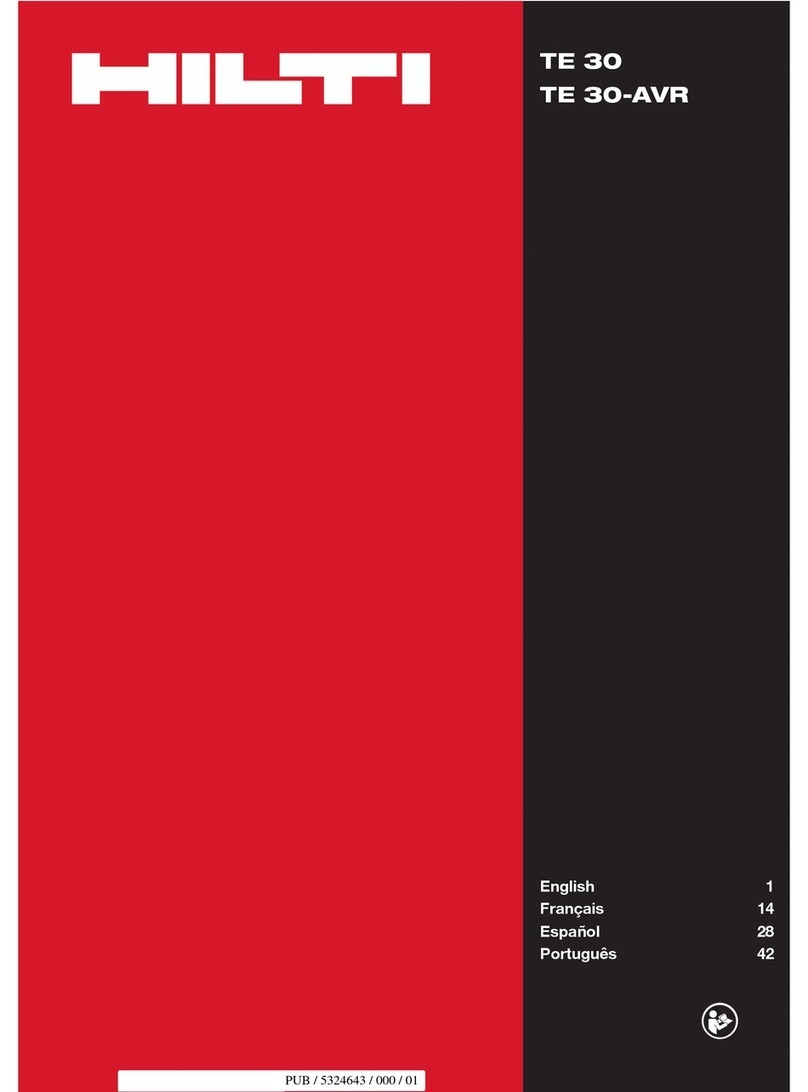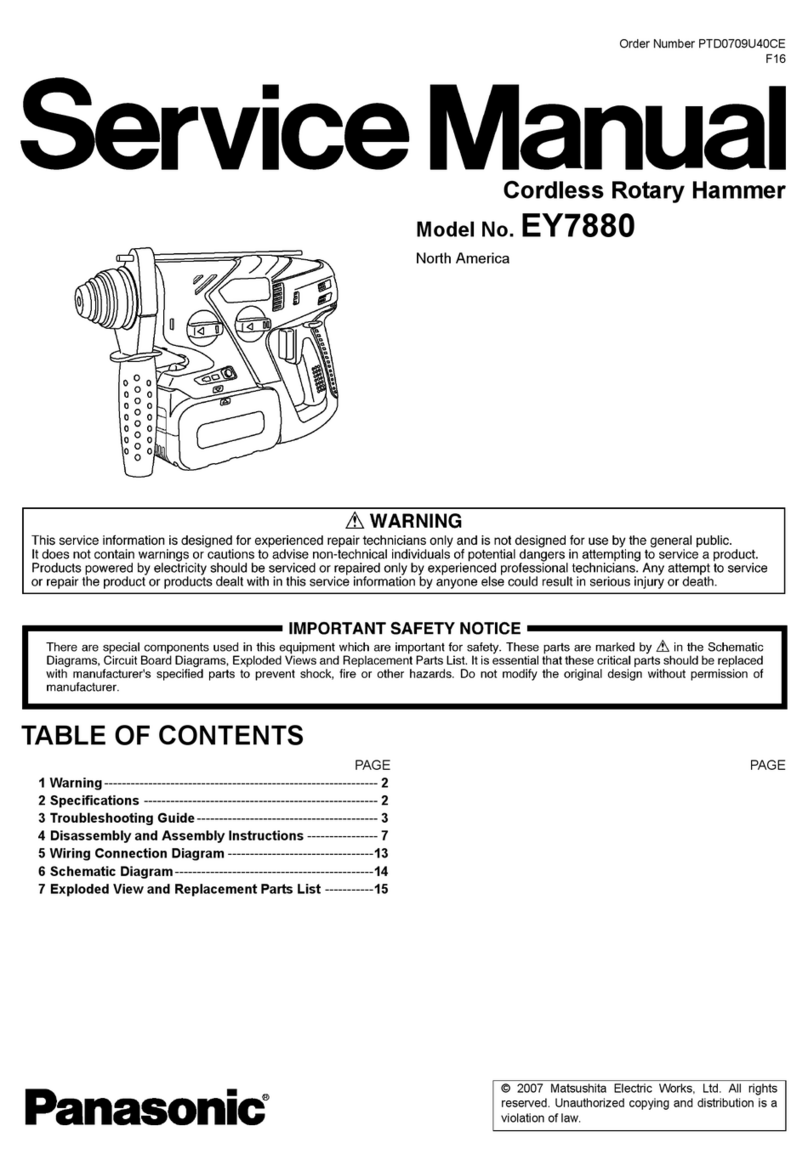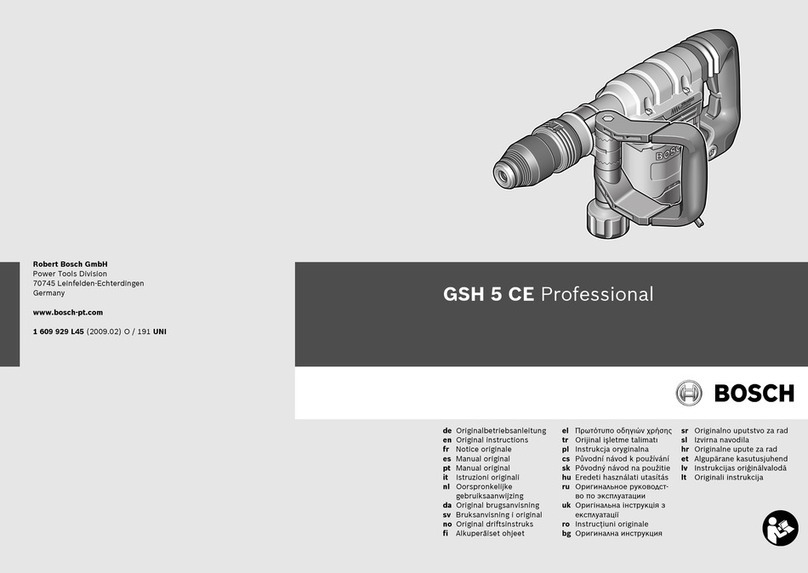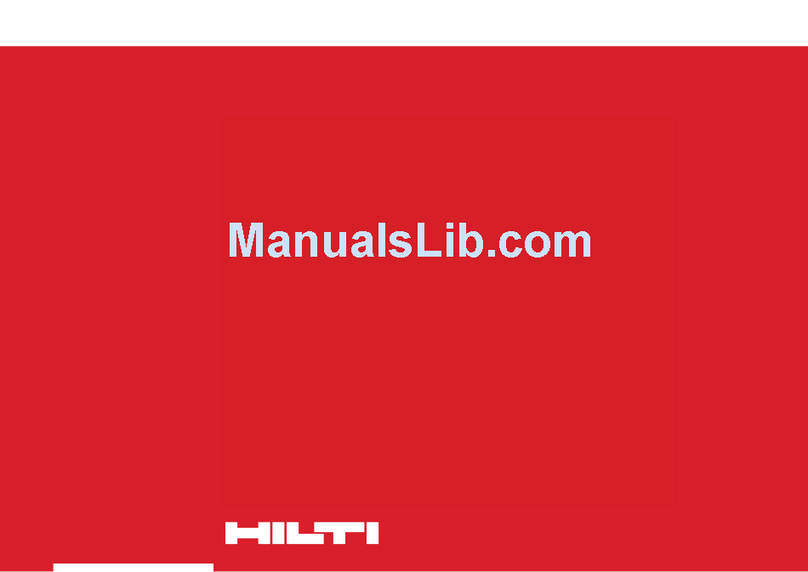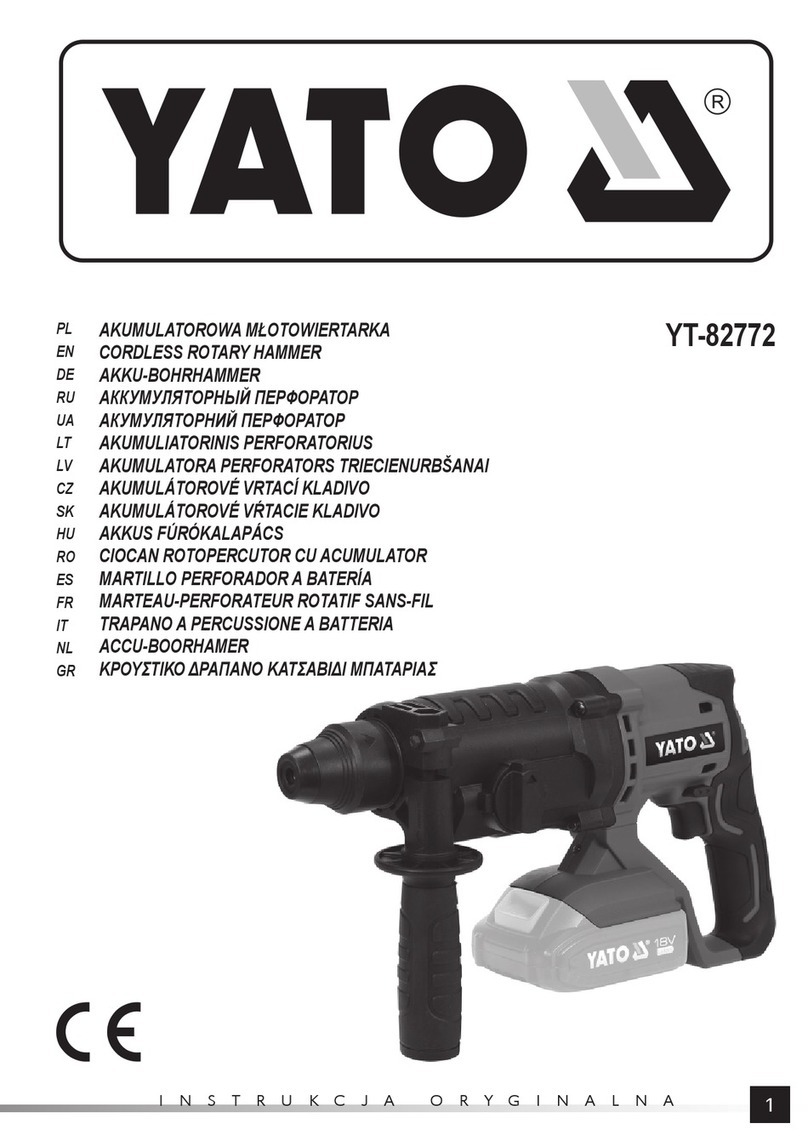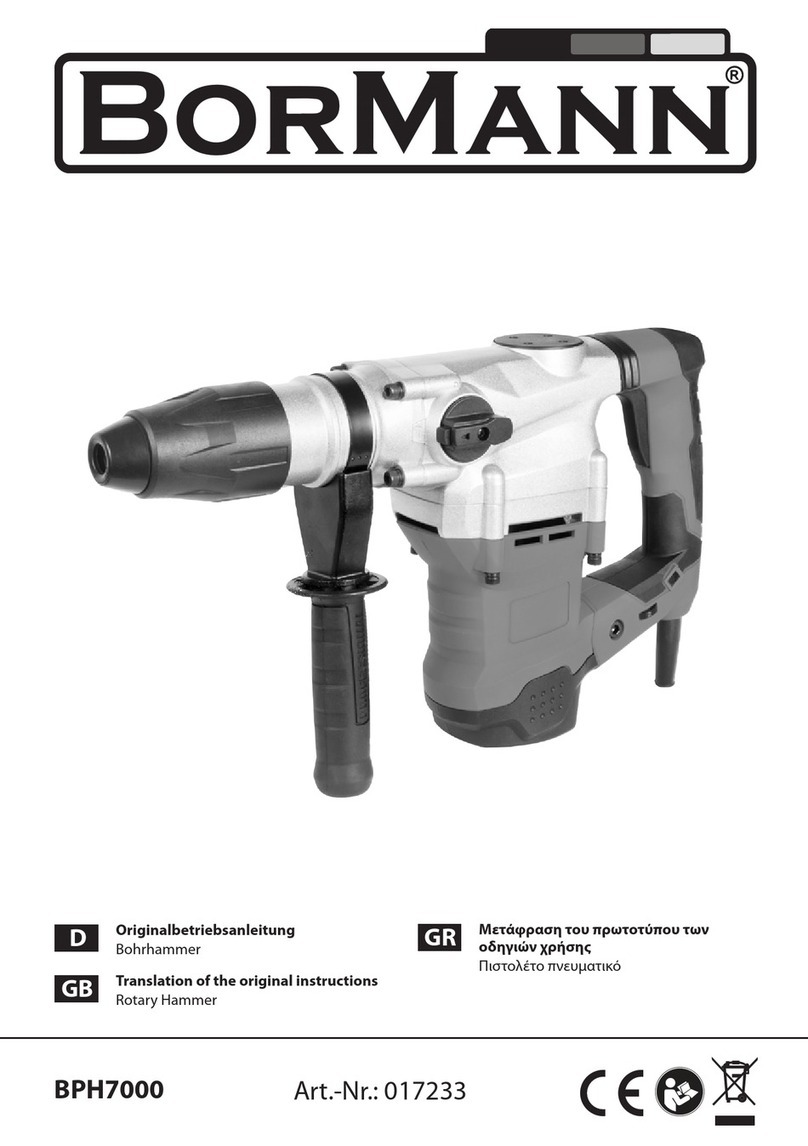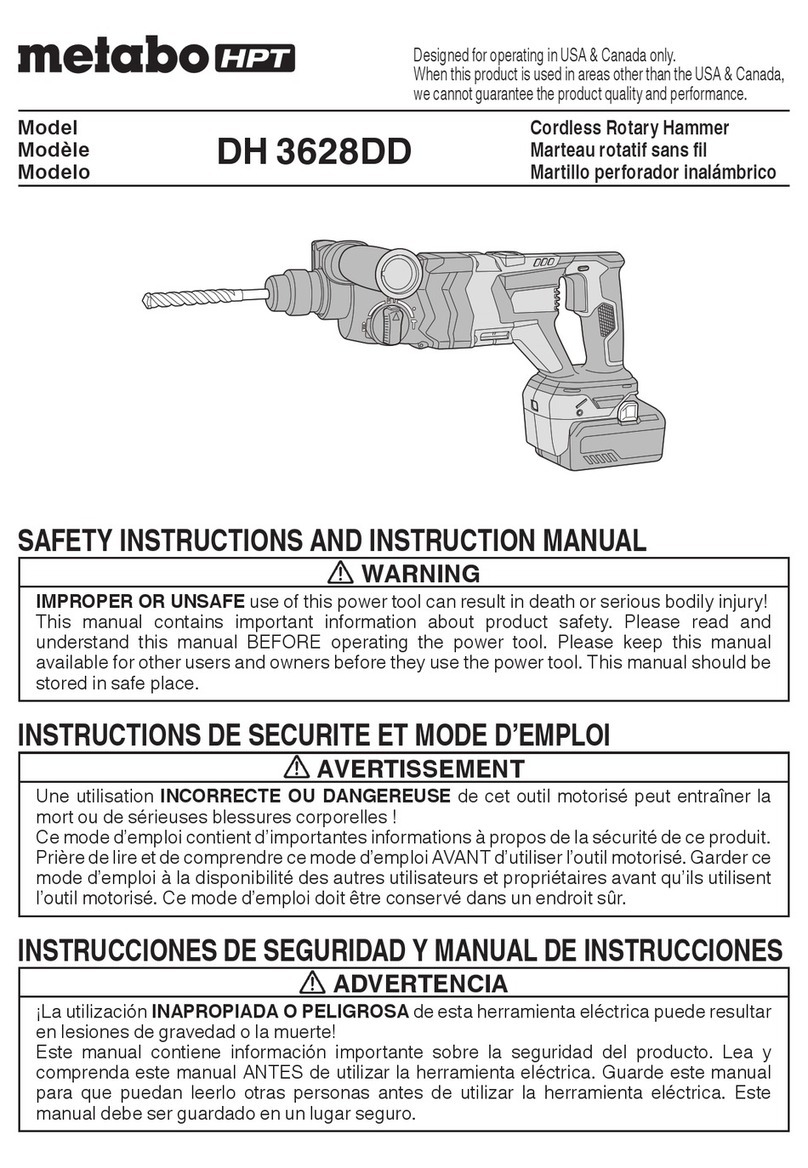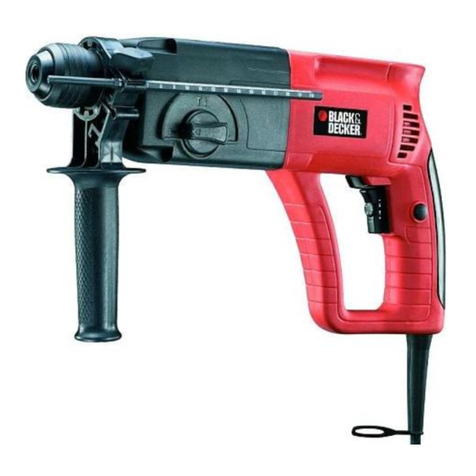
8
Bit angle
(when chipping, scaling or demolishing)
Fig.14
The bit can be secured at 24 different angles. To
change the bit angle, depress the lock button and rotate
the change lever so that the pointer points to
the symbol. Turn the bit to the desired angle.
Depress the lock button and rotate the change lever so
that the pointer points to the symbol. Then make sure
that the bit is securely held in place by turning it slightly.
Depth gauge
Fig.15
The depth gauge is convenient for drilling holes of
uniform depth. Loosen the clamp screw and adjust the
depth gauge to the desired depth. After adjusting,
tighten the clamp screw firmly.
NOTE:
• The depth gauge cannot be used at the position
where the depth gauge strikes against the gear
housing/motor housing.
Dust cup
Fig.16
Use the dust cup to prevent dust from falling over the
tool and on yourself when performing overhead drilling
operations. Attach the dust cup to the bit as shown in
the figure. The size of bits which the dust cup can be
attached to is as follows.
Bit diameter
Dust cup 5 6 mm - 14.5 mm
Dust cup 9 12 mm - 16 mm
006406
OPERATION
CAUTION:
• Always use the side grip (auxiliary handle) and
firmly hold the tool by both side grip and switch
handle during operations.
Hammer drilling operation
Fig.17
Set the change lever to the symbol.
Position the bit at the desired location for the hole, then
pull the switch trigger. Do not force the tool. Light
pressure gives best results. Keep the tool in position
and prevent it from slipping away from the hole.
Do not apply more pressure when the hole becomes
clogged with chips or particles. Instead, run the tool at
an idle, then remove the bit partially from the hole. By
repeating this several times, the hole will be cleaned out
and normal drilling may be resumed.
CAUTION:
•
When the bit begins to break through concrete or if
the bit strikes reinforcing rods embedded in concrete,
the tool may react dangerously. Maintain good
balance and safe footing while holding the tool firmly
with both hands to prevent dangerous reaction.
Blow-out bulb (optional accessory)
Fig.18
After drilling the hole, use the blow-out bulb to clean the
dust out of the hole.
Chipping/Scaling/Demolition
Fig.19
Set the change lever to the symbol.
Hold the tool firmly with both hands. Turn the tool on
and apply slight pressure on the tool so that the tool will
not bounce around, uncontrolled. Pressing very hard on
the tool will not increase the efficiency.
Drilling in wood or metal
Fig.20
Fig.21
Fig.22
For Model HR3200C,HR3210C
Use the optional drill chuck assembly. When installing it,
refer to "Installing or removing the bit" described on the
previous page.
Set the change lever so that the pointer points to
the symbol.
For Model HR3210FCT
Use the quick change drill chuck as standard equipment.
When installing it, refer to "changing the quick change
chuck for SDS-plus " described on the previous page.
Hold the ring and turn the sleeve counterclockwise to
open the chuck jaws. Place the bit in the chuck as far as
it will go. Hold the ring firmly and turn the sleeve
clockwise to tighten the chuck. To remove the bit, hold
the ring and turn the sleeve counterclockwise.
Set the change lever to the symbol.
You can drill up to 13 mm diameter in metal and up to
32 mm diameter in wood.
CAUTION:
• Never use "rotation with hammering" when the
quick change drill chuck is installed on the tool.
The quick change drill chuck may be damaged.
•
Pressing excessively on the tool will not speed up the
drilling. In fact, this excessive pressure will only serve
to damage the tip of your bit, decrease the tool
performance and shorten the service life of the tool.
• There is a tremendous twisting force exerted on
the tool/bit at the time of hole breakthrough. Hold
the tool firmly and exert care when the bit begins
to break through the workpiece.
• Always secure small workpieces in a vise or
similar hold-down device.

